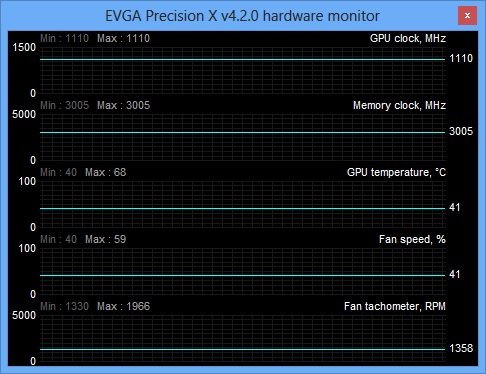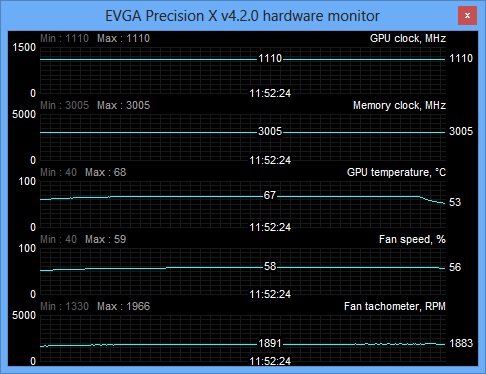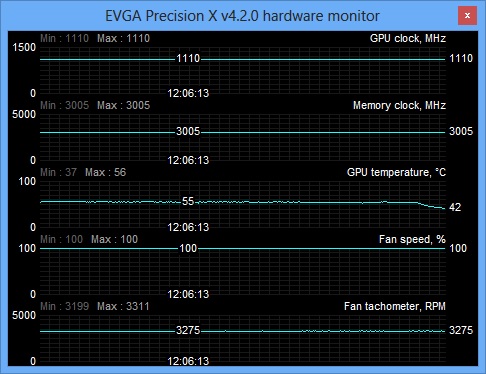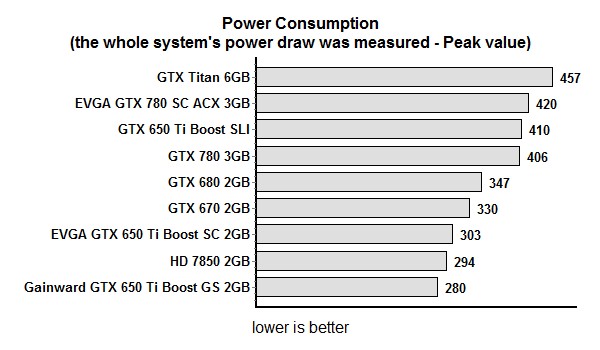Index
- EVGA GTX 780 Superclocked ACX reviewed
- The Packaging
- A closer look at ACX cooler
- A closer look at GTX 780 SC ACX
- Testbed
- Crysis 3
- Far Cry 3
- Hitman Absolution
- Metro 2033
- Sleeping Dogs
- Dirt Showdown
- Aliens vs Predator
- SniperEliteV2
- 3DMark 11
- 3DMark
- Unigine Valley
- Unigine Heaven
- Thermals, Noise, Consumption
- Overclocking
- Conclusion
- All Pages
A very important feature of the GTX 780 is improved thermal control and cooling. The new Boost 2.0 algorithm will reduce the GPU clock if the temperature goes over 80 degrees.
The EVGA ACX cooler is superior to the reference design as it keeps the GPU temperatures below 69 degrees, which is 11 degrees or 15 percent better than the reference unit. This is important as the EVGA GTX 780 SC ACX is factor overclocked. If the cooler wasn’t as good, GPU Boost 2.0 would kick in and throttle the card once it gets too hot for comfort. Luckily, it doesn’t.
Coming up with a cooler that copes so well with an factory overclocked GPU couldn’t have been easy, but EVGA pulled it off. It managed to hit the sweet spot, as the cooler does a better job than the reference design, while at the same time generating same noise.
Of course, it is not inaudible under load, but it is so quiet that you can barely hear it outside the chassis, which is impressive to say the least. When it’s idle the card is completely silent.
During our Unigine Heaven test at 1080p, with extreme tessellation settings, the GPU hit 64 degrees Celsius. In the same test a reference GTX 780 hits 80 degrees. In Crysis 3, at 2560x1600 and very high details, the GTX 780 SC ACX heats up to 68 degrees, while the reference card hits 80 degrees.
Idle GPU temperature
Load GPU temperature
Load GPU temperature with fan at max
In terms of power efficiency, we can report that the GTX 780 SC ACX can draw a bit more juice than the reference GTX 780. This is quite normal for an factory overclocked card. Since EVGA uses a reference PCB, we can pin some of the blame for the fact that it consumes so much power on Nvidia. Overall, performance-per-watt is still good and it is on a par with the GTX 680.
